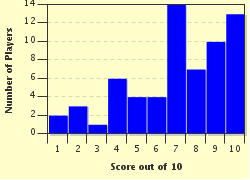Quiz Answer Key and Fun Facts
1. Many years ago the Vikings, led by a chieftain named Reginherus, sailed to Paris. By what other name is this chieftain known?
2. On their way to Paris, the Vikings sailed down the river without meeting much resistance. What river was it?
3. The Viking long boats were quite a frightening sight! Carrying over 5,000 men, it is said that a fleet of 120 boats sailed toward Paris. What is another name for a Viking longship?
4. It must have taken some time to amass such a large number of ships and men. In fact, the siege of Paris in 845 is the first instance of what the Vikings called overwintering.
5. As the Vikings sailed toward Paris, the Frankish king made a huge mistake by dividing his army. What was his name?
6. Oh, my! To make matters worse, the Vikings laid waste to Paris and plundered the city on a Christian holiday. Which one?
7. Sir William said that for raiding Paris on such a holy occasion, the Vikings were punished by God. How were they punished?
8. Finally, the Frankish king had to pay the Vikings to leave. How much was paid to the Vikings?
9. What is the term that was eventually used for payment to buy off Viking attack? This type of ransom was typically paid by the French and English.
10. After collecting their tribute in 845, the Vikings left Paris and never returned.
Source: Author
ponycargirl
This quiz was reviewed by FunTrivia editor
bloomsby before going online.
Any errors found in FunTrivia content are routinely corrected through our feedback system.

